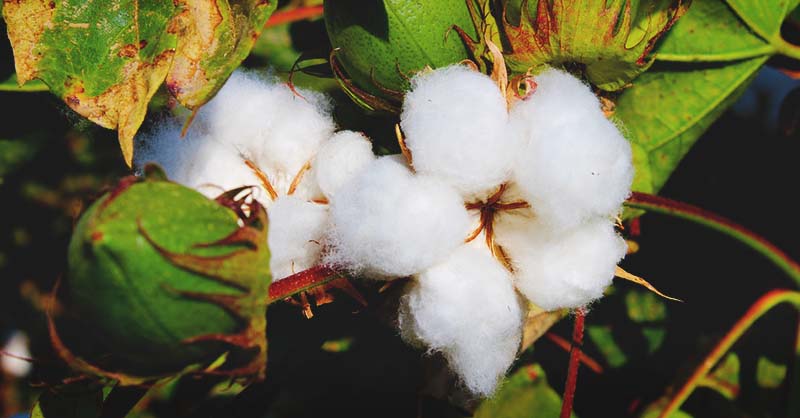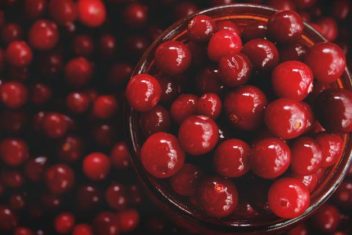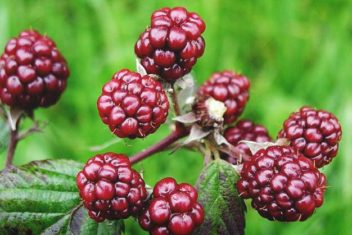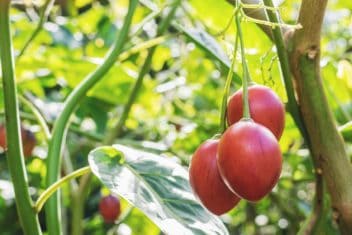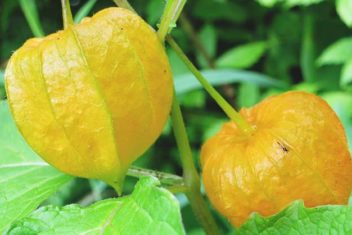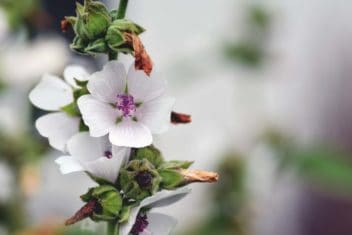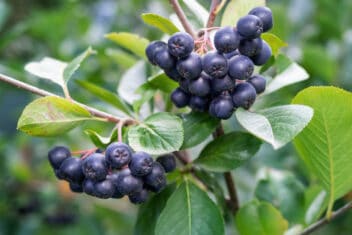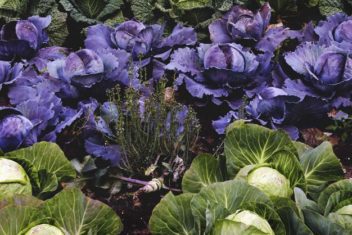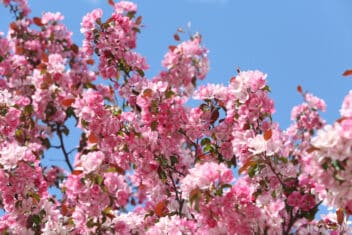Cotton is an indispensable crop. We use cotton to make everything from clothing and rope to fishing nets, coffee filters, and paper. These days, more and more people are trying their hand at growing cotton, whether its to live a self-sufficient lifestyle, to learn an ancient craft, or to make a little cash.
Cotton is a member of Malvaceae – the mallow family. It’s related to hibiscus, hollyhocks, and okra. You’re probably familiar with the puffy cotton bolls, but did you know the flowers of the cotton plant are beautiful as well? They start off white and then turn a lovely shade of pink.
Cotton is a labor-intensive crop and takes lots of tender loving care. We grew cotton one year to help us understand what early Americans experienced. The bolls have sharp spiny edges which can poke you, which gave us sympathy for what many people, including slaves in the South, have gone through trying to harvest this crop.
Cotton is still a major commercial crop in the southern United States. After all, your blue jeans and t-shirts are still made of cotton. On a smaller scale, you can use it to create your own yarn or sell at a market.
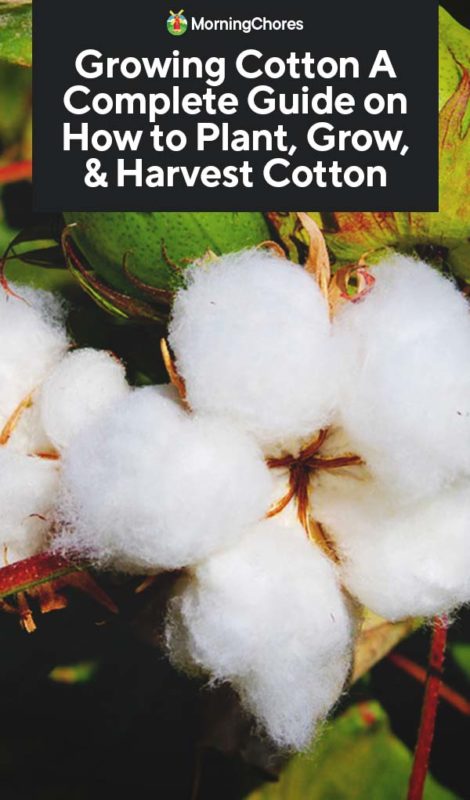
What Is A Cotton Boll?
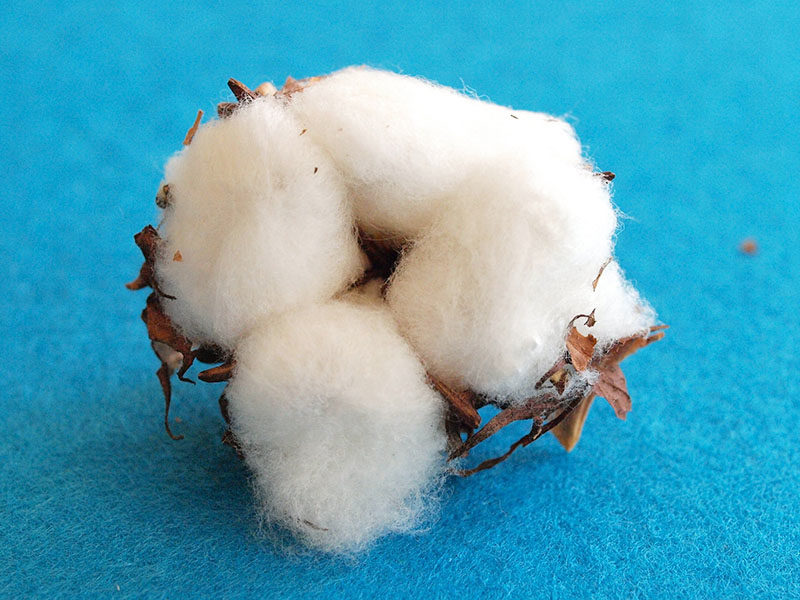
The cotton boll (not ball) is the seed pod of the plant. The seeds are attached to wispy thread like fibers in order so that they will become air born when the boll opens. This is the plants way of dispersing offspring to new locations.
Is It Legal To Grow Cotton?
Before you get started, it’s important to know that many states have outlawed growing cotton in an attempt to eradicate the cotton boll weevil.
It’s currently illegal or restricted to grow cotton in:
- Arkansas
- Alabama
- Arizona
- California
- Florida
- Georgia
- Kansas
- Louisiana
- Mississippi
- Missouri
- New Mexico
- North Carolina
- Oklahoma
- South Carolin
- Tennessee
- Texas
- Virginia
Check with your local extension office for full details. Some states require a permit that states you’re growing a small amount that you don’t intend to use for commercial value. Other states may have you participate in an education program that explains how to control the boll weevil so that it doesn’t contaminate nearby farms.
Cotton Varieties
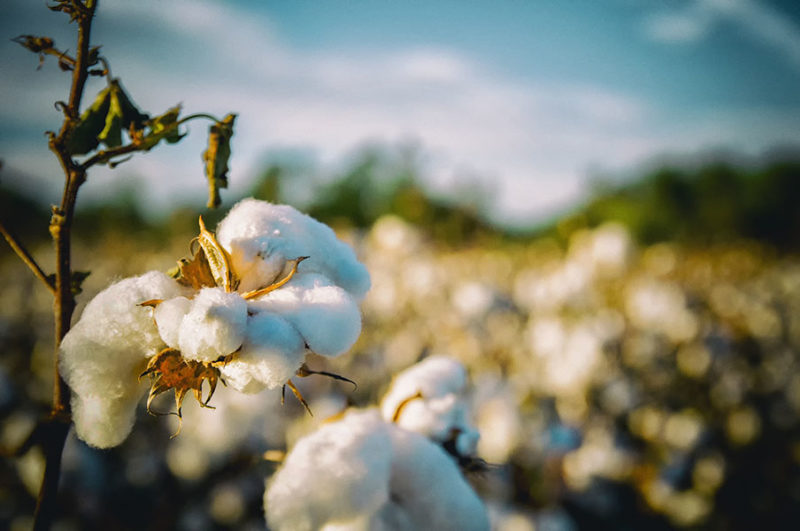
Many people don’t realize that cotton comes in a variety of colors. White cotton used to be the standard for commercial growers. Today’s cotton is often bleached to bring out a uniform color.
In the past, brown cotton was commonly grown for personal use by slaves and poor whites. However, pink, green, blue, and yellow have all been popular at one time or another.
Many of these colors were developed by slaves and black freedmen because they were not allowed to grow the “white” cotton of their masters. Colored cotton varieties weren’t as favored because they have shorter plant fibers, which are harder to spin and dye.
Nowadays, these colorful heirlooms can be hard to find. If you want to give them a try, one good source for heirloom cotton is Southern Exposure Seeds located in Virginia.
Arkansas Green Lint Cotton
This variety produces yellow-pink flowers that make nice cut bouquets. The cotton is a light green and has short fibers with dark green seeds. It takes 135 days to mature.
Erlene’s Green Cotton
Another green variety that is known for its ease of spinning. After washing, the fibers take on a more yellowish-green color. Tall plants grow to five feet high and take 130 days to mature.
Mississippi Brown Cotton
This variety makes history come alive. It’s a cultivar that was once favored by slaves and makes a wonderful yarn. Plants grow five feet tall and are extremely drought tolerant. The cotton color ranges from light tan to a rich golden brown. This type matures in 130 days.
Nankeen Cotton
Nankeen is the king of heirloom cottons. It was grown during the Civil War. It appears as a natural brown color on the plant, but the lint becomes copper colored when washed. Nankeen is a hardy, insect resistant variety that will do well in poor soil and drought-prone areas.
Red Foliated White Cotton
This is a great variety to grow in containers or a flower bed. It has striking red leaves and stems that pair well with beautiful yellow and white flowers. A bit smaller, this one grows three to five feet tall. The cotton is a naturally bright white color. It matures in 120 days.
Egyptian Fine
This is a newer variety used in modern commercial crops. Egyptian fine is the cotton that is famously used in sheets and fabrics. It produces a white long, fine fiber. It has a longer growing period and matures in 155 days.
Planting Cotton
Sowing Cotton
Cotton is a warm-weather annual that needs a long growing season. You can sow it directly in the ground if you live in zones 8-10.
In zones 5-7 treat cotton as you would tomato plants. Seed them inside in a high-quality seedling mixture in a warm room with plant lights about six weeks before last expected frost. Plant two seeds per peat cup. Plant seeds one inch deep. Thin seeds to one per pot.
Cotton germinates best in temperatures between 75-80°F. The seeds take about two weeks to germinate, so don’t get impatient.
Soil Requirements
Cotton prefers loose earth, but many varieties will grow in compact, drier soil. Cotton can handle sandy, loamy, and clay types equally well. Plants prefer a pH between 5.5-8.5, and well-drained, rich earth. Add a generous amount of compost to the first several inches of soil before planting.
Sun Requirements
Cotton needs full sun to be productive.
Growing in Containers
You can also grow cotton indoors as a houseplant because it does well in containers. You’ll need to give it supplemental light if you want it to be productive.
You can also grow cotton outside in containers. Make sure you use a larger pot, such as the size used for trees.
Spacing
If you are planting directly in the soil, plant seeds about four inches apart and rows about 30 inches apart. Cotton is self-pollinating, so that makes it easy to grow a small garden.
Caring For Your Cotton Plants
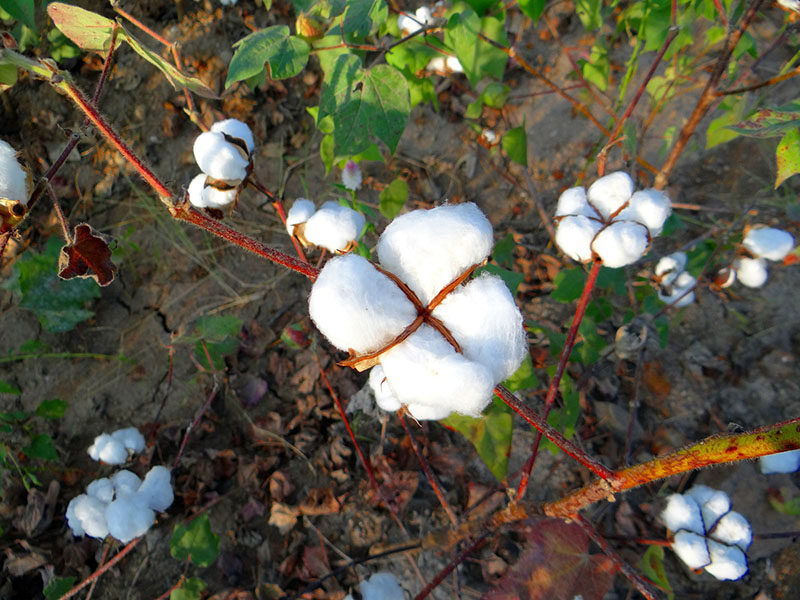
Watering
Keep your growing cotton plants moist but not wet. Too much water makes them prone to rot diseases. Water is especially important during the time the boll is developing.
Fertilizing
Cotton is a heavy feeder and needs nitrogen and potash. It also appreciates an organic fertilizer such as fish emulsion. Organic fertilizers developed for tomatoes are well suited to your cotton plants.
Mulching
Cotton benefits from a thick application of mulch. Straw is best as it retains moisture but allows for air circulation.
Problems and Solutions to Growing Cotton
Armyworm
Armyworm hasn’t been a major problem historically, but it seems to be increasing in some states in the south. The good news is that many new strains of cotton are resistant. The major challenge is telling the difference between an armyworm and a bollworm.
If you do have an armyworm infestation, a mix of pyrethroid and Diamond will do the job to get rid of them.
Aphids
Is there any plant that aphids won’t attack? These tiny insects suck the life out of cotton and can stunt growth. Spray them off plants with a blast of water and then treat with neem oil to keep them away.
Cutworms
Cutworms are the larvae of brown and gray moths. They nibble cotton plants at the base, cutting them off at the soil surface. If you don’t have a massive garden, you can create cotton collars to prevent the worms from eating your plants.
You can also sprinkle bran meal and cornmeal around the plants with a trail leading away from the plant stems. They will eat the meal and die.
At the end of the season, remove all plant debris and cultivate the soil.
Boll Weevil or Bollworm
The primary pest of the cotton plant is the boll weevil. This beetle feeds on the buds and flowers of cotton plants. Adults overwinter in fields and emerge in late spring to lay eggs. They have many natural predators such as spiders, birds, and parasitic wasps.
Boll weevils are a poster child for sustainable agriculture. Initially, commercial farmers sought to control the boll weevil with DDT – a harmful chemical popular in the 1950s. The boll weevil became immune to DDT and continued to flourish, decimating crops.
Now, eradication of the boll weevil uses more sustainable controls such as plowing and exposing eggs in winter.
Slugs
Slugs can be a problem, especially in moist areas. They like to hide in the mulch during the day and come out at night to eat the leaves of plants.
Fortunately, slugs are easy to control. You can hand pick them and toss them to your chickens or into a bucket of soapy water. Sluggo, an organic pest control, also works well.
A good homemade remedy is to put beer in a saucer and bury it at ground level. The slugs climb in, get drunk and die from the salts in the beer.
Alternia and Stemphylium Leaf Spot
As the name implies, these diseases cause spots to appear on plant leaves. As the disease progresses, the spots expand and turn necrotic. Plants with potassium deficiency are more likely to suffer from these issues. Make sure plants are well-fed and well-watered to help them avoid falling victim to leaf spot.
Bacterial Blight
Also known as Angular Leaf Spot, this disease is caused by a bacteria that appears as water-soaked lesions that gradually increase in size. You can buy resistant cultivars if you struggle with this disease, and be sure to rotate your crops.
Fusarium Wilt
Like tomatoes, cotton is susceptible to fusarium wilt. This disease attacks the roots of growing cotton and then spreads up the plant, causing it to wilt. Keep pests away because they spread this disease and keep plants healthy so they can resist it. Sterilize tools between use, and remove and destroy any plants that exhibit symptoms.
Cotton Root Rot
Cotton is susceptible to root rot, which often occurs in early summer. It causes the leaves to wilt and can kill young plants. Keep plants well-fed and rotate crops. You can also plant a sorghum barrier to help keep it out.
Companion Plants for Growing Cotton
Cotton gets along well with many herbs including basil, cilantro, mint, dill, and sage. It makes a good pairing with onions and garlic which may help with repelling the boll weevil. It’s also a good companion for sunflower.
Avoid growing cotton with potato.
Harvesting and Storing Cotton
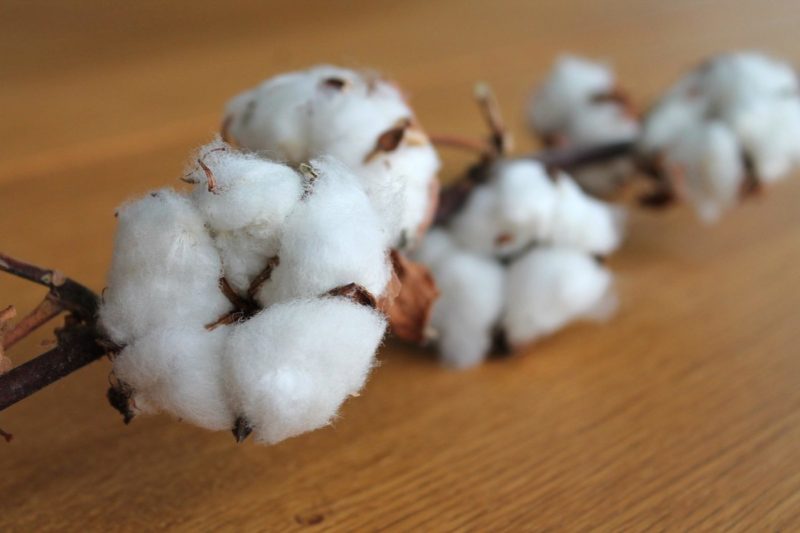
Cotton is slow to mature. It takes 70 days of warm weather (above 60°F) before the cotton plant flowers. After flowering, the plant will need an additional 50 days before it forms seed pods. The cotton is part of the seed pod or boll.
If you are familiar with milkweed then you can imagine how cotton looks in the seed pod. Where milkweed is silkier, cotton strands are fluffier.
Cotton has a long harvest period of 4-6 weeks. The bolls will become dry and hard. When they break open and reveal the cotton they are ready to harvest. The harvest usually starts in July in Southern states and ends in November in Northern states.
Each plant can yield up to one hundred cotton bolls. It is best to wear gloves when you pick the bolls because the inside is extremely prickly. Grasp the ball of cotton and twist it to remove it from the shell.
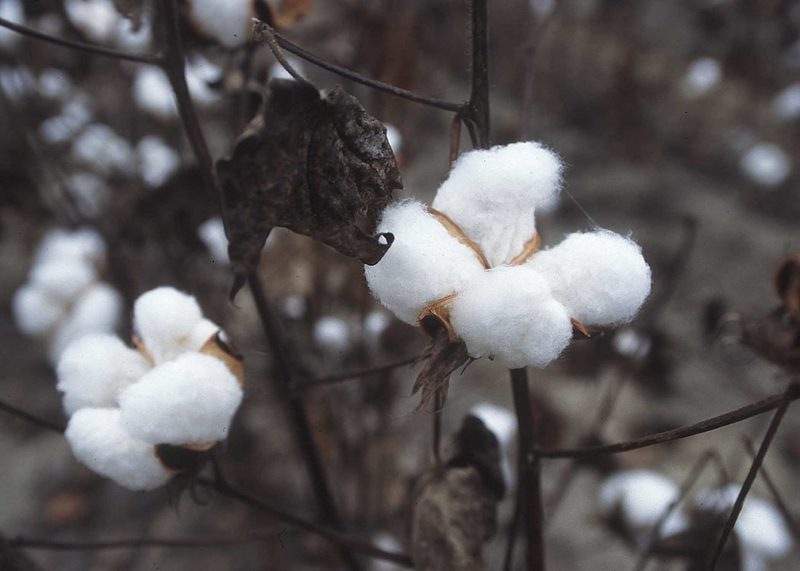
While commercial cotton is harvested these days by giant machines, picking cotton by hand is one way for us to get in touch with our collective history. To harvest cotton, grab it at the base and twist it out of the boll. The entire cotton plant won’t be ready to pluck at the same time, so only take the bolls that are ready to go and leave the others for later.
Once you’ve harvested it, spread the cotton out in a cool, dark area and let it dry. Once the cotton is dry, you will need to separate the seeds out.
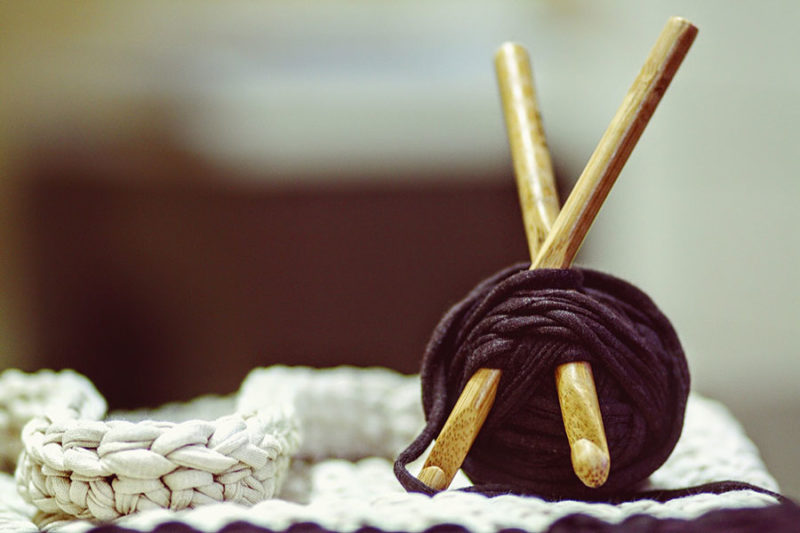
Use your cotton for crafts that require a cotton ball, or use it as the stuffing for homemade toys or pillows. You can also card and spin it into a fiber.
What Happens If The Weather Turns Cold?
The cotton plant will not survive a frost. If you live in a northern climate zone and the weather turns cold you can still save your bolls.
Pick the bolls off the plant and place them in a warm spot such as near a wood stove. Some of them will continue to ripen and open up.
We can’t wait to see what you make with your home-grown cotton. Be sure to share your projects in the comments.

